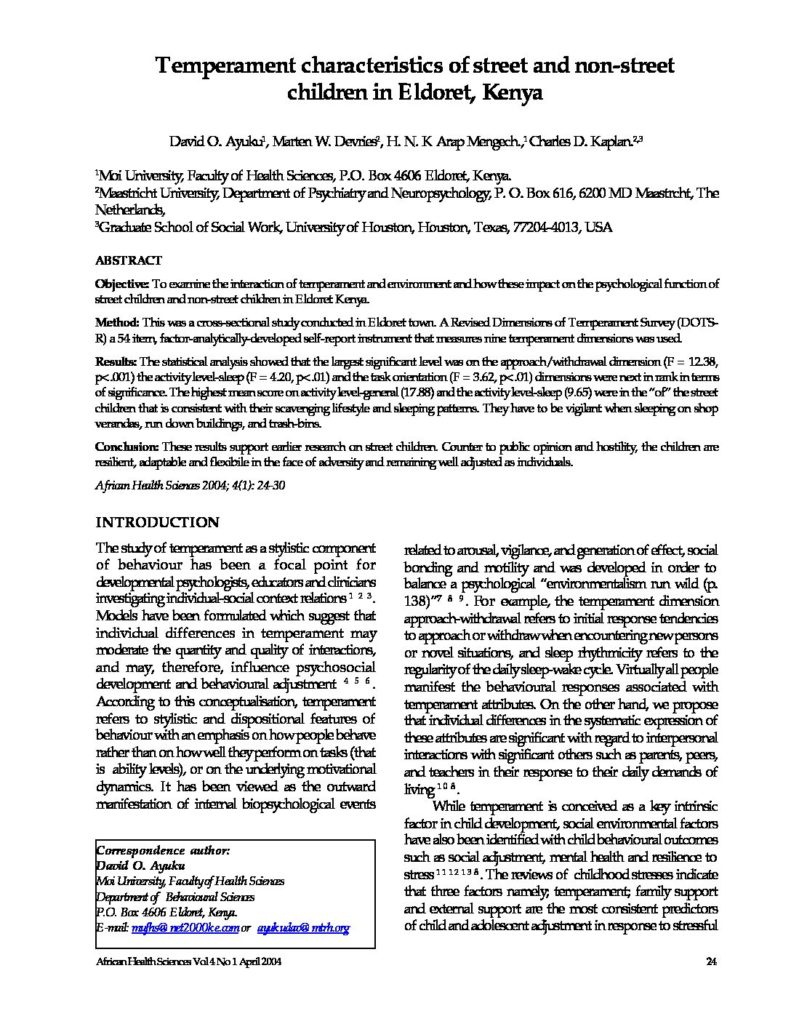
Temperament characteristics of street and non-street children in Eldoret, Kenya
Summary
This article is published in the journal African Health Sciences and is free to read online.
Objective: To examine the interaction of temperament and environment and how these impact on the psychological function of street children and non-street children in Eldoret Kenya.
Method: This was a cross-sectional study conducted in Eldoret town. A Revised Dimensions of Temperament Survey (DOTSR) a 54 item, factor-analytically-developed self-report instrument that measures nine temperament dimensions was used.
Results: The statistical analysis showed that the largest significant level was on the approach/withdrawal dimension (F = 12.38, p<.001) the activity level-sleep (F = 4.20, p<.01) and the task orientation (F = 3.62, p<.01) dimensions were next in rank in terms of significance. The highest mean score on activity level-general (17.88) and the activity level-sleep (9.65) were in the “of” the street children that is consistent with their scavenging lifestyle and sleeping patterns. They have to be vigilant when sleeping on shop verandas, run down buildings, and trash-bins. Conclusion: These results support earlier research on street children. Counter to public opinion and hostility, the children are resilient, adaptable and flexibile in the face of adversity and remaining well adjusted as individuals.
Discussion
Users can discuss this report and make suggestions for future updates. You must be signed in to submit a comment.
No comments
Join the conversation and
Become a Member Existing member loginbecome a member.